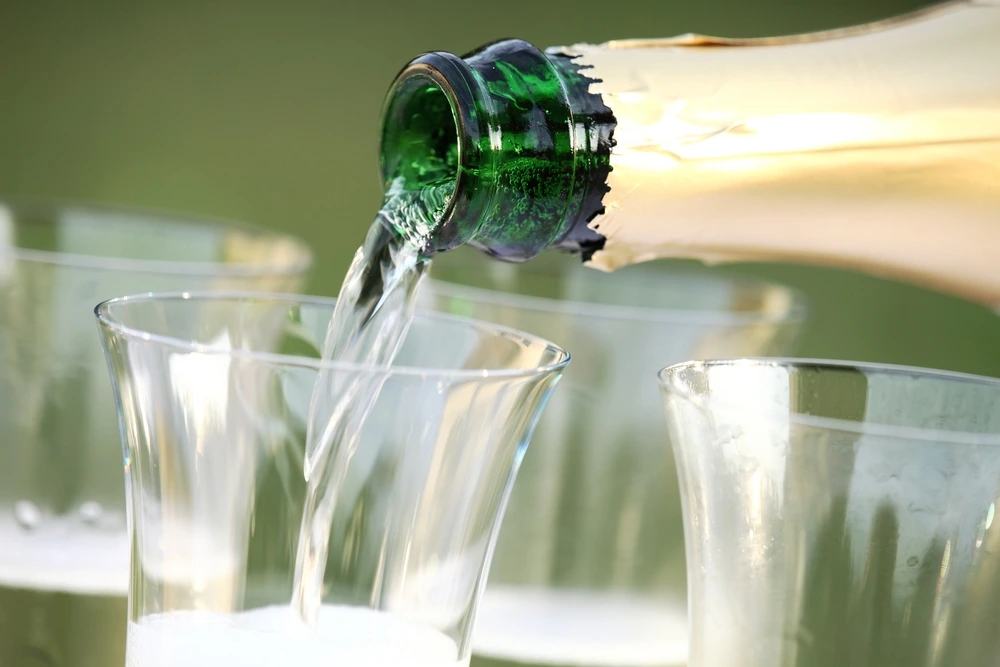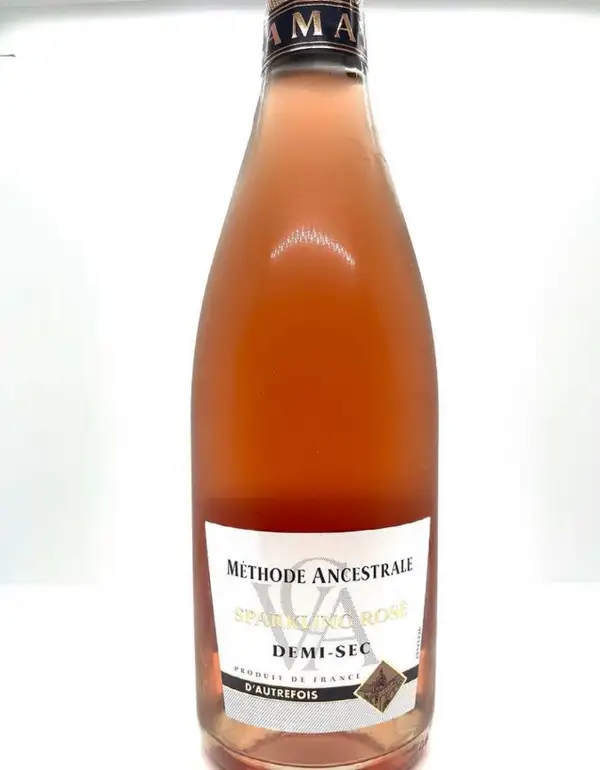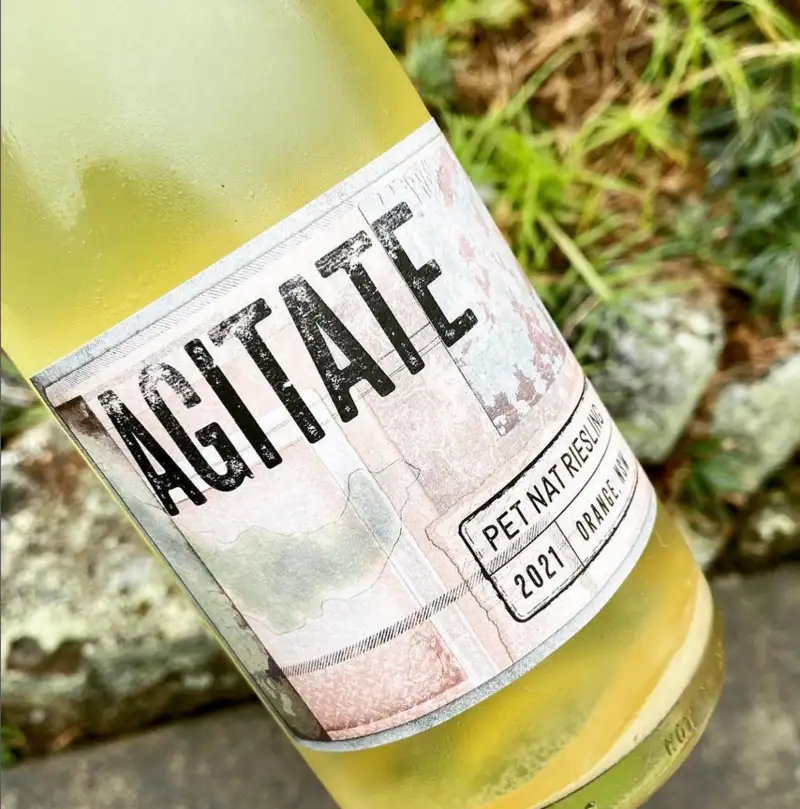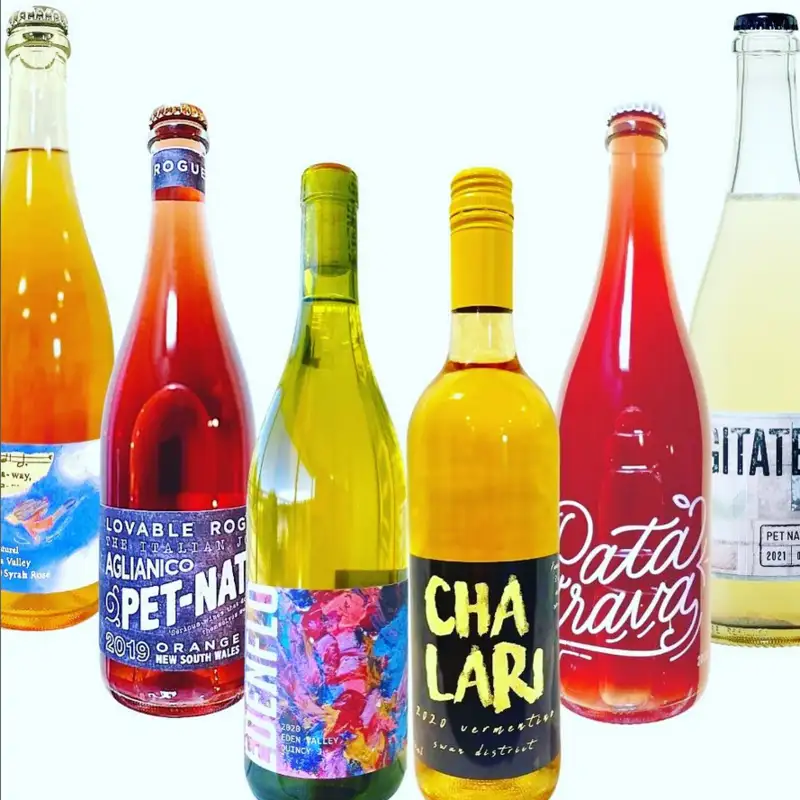Sparkling wines come in many unique tastes and flavors, each of which provides wine fans like you with an impressive array of purchasing options.
However, did you know that Pet-Nat wine is becoming more popular worldwide and may soon be nearly as regularly enjoyed as Prosecco or the King of Sparkling Wines, Champagne?
It might be hard to believe, but this naturally sparkling wine has recently had a kick in the pants by hipsters looking for the newest wine craze.

So, What is Pét-Nat Wine?
Pet-Nat, or Petillant Naturel is French for “Naturally Sparkling”.
Pet-Nat wines can be made from any grape, although those higher in acidity tend to work best. These include chenin blanc, riesling and pinot gris.
It may be called ‘Hipster Champagne’ by some derisive wine fans, but this wine has a history that goes back centuries.
The Pet-Nat brewing method pre-dates Champagne, Prosecco, and Cava, and is a unique wine option that uses a more fine-tuned and natural brewing method that separates it from other wine types on the market.
What does the term “natural” mean when discussing wines? Aren’t all wines made from natural ingredients? Yes, but Pet-Nat is made using a more hands-off method.
Winemakers typically provide minimal intervention when creating this wine, so they don’t add more sugar or yeast after the initial fermentation. Instead, they leave it to brew and stew without touch-ups.
The cool thing about this process is that it creates a wine with minimal extra sugar and one that has a relatively rich and flavorful taste.
However, the Pet-Nat method creates less sugar than Prosecco wines, already a reasonably dry option.
But, thanks to this method, it also has less sugar than Champagne, meaning it’s a healthier sparkling wine option than these two popular types.
Expect undertones of pear and peach, as well, and a taste that feels similar to Champagne while possessing a distinct flavor itself.
Most people find that this wine is an excellent option if they prefer slightly sweet but relatively dry, sparkling wines that blend well with many food types.
For example, it should go well with most fried food, though we’ll discuss more food pairing options below to understand what to expect.
How is Pét-Nat Wine Made?

Pet-Nat wine uses a very old-school winemaking method that produces a low-alcohol wine (around 10-12% ABV per bottle) with surprisingly low sugar.
Typically, a low-alcohol wine has higher sugar because the yeast hasn’t eaten as much of the sugar. However, since no extra sugar or preservatives are added to this wine, it typically has far fewer sugars than Prosecco and Champagne.
This method is known as Methode Ancestrale, which is one of the oldest known French winemaking techniques.
The wine doesn’t finish the fermentation before bottling, which may be surprising for some wine fans.
However, this pre-fermentation bottling method was once widespread and only became outdated when modern wine fans demanded higher-alcohol and higher-sugar wines.
Unlike other sparkling wines, Pet-Nats don’t use a secondary fermentation period, otherwise known as Methode Champenoise.
As you may guess based on the name, this method is used to make Champagne and other sparkling whites.
This second fermentation provides extra alcohol and a higher sugar level, which is where Champagne gets its unique and popular flavor profile.
This lower-maintenance fermentation method doesn’t mean that Pet-Nat wines don’t require work.
On the contrary, there’s a delicate balance between letting them ferment too long or too short before bottling.
Skilled Pet-Nat winemakers understand this balance and can produce consistent blends, though Pet-Nat is a notoriously variant wine from bottle to bottle due to this technique.
How Does Pét-Nat Wine Taste?
A Pet-Nat wine will have a light taste with a slightly fizzy feel that is typically low in alcohol with a sweeter overall taste.
The overall result is relatively raw, though, meaning that the flavors tend to be rather stark.
You can expect some fruity undertones and a touch of chocolate and caramel in some bottles. The uniquely hands-off fermentation method does create some varying possibilities.
Expect a taste similar to your rawer Champagne options but with less overpowering carbonation.
Pét-Nat vs. Champagne: The Differences

Pet-Nat differs from sparkling wines like Champagne, Prosecco, and Cava due to the unique brewing method used to make this wine. That said, there are differences between Champagne and sparkling wines, too.
As Pet Nat produces naturally sparkling wines that sit well on the tongue, it has a somewhat unpredictable end result.
Champagne and Prosecco almost always taste the same, no matter what bottle or brand you purchase. Pet-Nat is different because of its unique creation method.
That doesn’t mean that you’ll get one wine that tastes completely different from another.
The taste differences will be subtler, including more robust acidity, a more decadent peach or pear taste, or a somewhat sharper aroma.
You’ll still be able to tell you bought a Pet-Nat wine, no matter the taste variations. But these differences do matter and are something to prepare yourself for when getting into this wine.
Pet-Nat is also typically a bit more “rustic” than Champagne, which is a term that needs some explaining.
Simply put, the Pet-Nat method naturally produces a cloudier wine, one with a less filtered texture.
In addition, the bottle is typically capped like a beer rather than using a cork, which does affect the taste as well.
The taste is also a bit simpler than Champagne and definitely not quite as sharp as Prosecco or Cava.
Pet-Nat wines are also a little cheaper than Champagne and about the same price level as Prosecco or Cava. The exact price may vary, but you can often find some for under $20.
These wines will also be reasonably tasty, depending on the brand you purchase.
Just know that naturally sparkling wines have a slightly different overall texture than other sparkling wines and might not be to some people’s tastes.
The carbonation won’t be as intense as you might expect from a typical sparkling wine.
However, it’s still well carbonated and appealing, and should blend well with many foods. However, the less intense carbonation may surprise you if you’re not used to it.
We strongly suggest trying one out at a friend’s or at a winery first to see what to expect with this unique and flavorful wine type.
How to Know a Wine is a Pét-Nat

Check your wine’s label to see if it qualifies as a Pet-Nat.
Although wine laws dictating labeling are somewhat lax in its brewing region, many manufacturers will put a label on it saying that it is Petillant Naturel.
If not, the only way to know for sure is to open the bottle. The bubbles should be a little more delicate and less overwhelming than other sparkling wines.
If this option isn’t available, check to see if the wine has a cap instead of a cork. That’s a sure-fire way to know you’ve got a Pet-Nat wine option.
Best Food Pairings for Pét-Nat Wine
Pet-Nat wines typically pair well with foods that you’d pair with Champagne, Cava, or Prosecco.
That said, they aren’t exactly the same, so it is essential to know what kind of foods go well with them.
For example, a charcuterie board of cream cheese, gouda goat cheese, Camembert, sausage, hazelnut crackers, pistachios, and raspberry vinegar pickled onions goes perfectly with this wine.
You can also serve apples and pomegranates alongside truffles and very herb-rich meals. As you can see, it goes well with light snacks.
How to Store and Serve Pét-Nat?
Pet-Nat wines can be stored just like any other sparkling wine. Put them in your refrigerator for 3-5 days before serving, or place them in a chilled wine cellar for a week or two.
Sparkling wines aren’t designed to age but to serve nearly very quickly after purchase.
When serving, prop the bottle upright in an ice bucket for at least half an hour before serving.
Doing so helps keep the sediment down at the bottom. Next, pour the wine into high-stem glasses and drink by holding the stem to minimize temperature change.
Related: Quick ways to chill champagne and sparkling wines.
- Shrimp Cocktail (and More) Wine Pairing Guide - 09/06/2022
- What Wine Serving Sizes Look Like: Standard Size and More - 08/06/2022
- How Much Sugar is in Wine: Glass and Bottle Sugar Content - 08/06/2022






